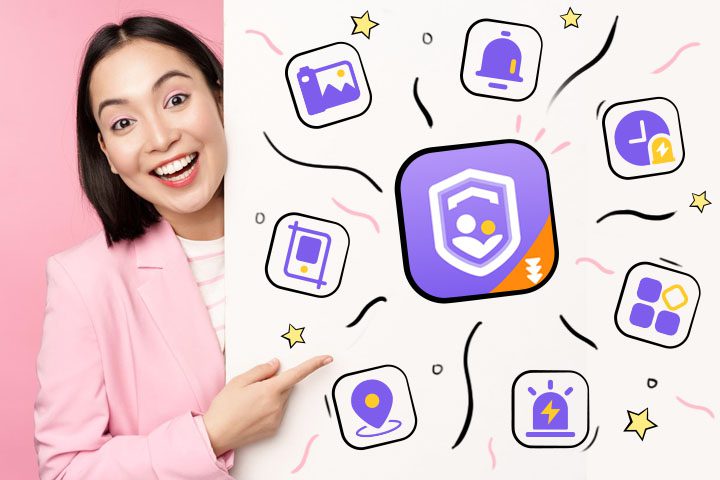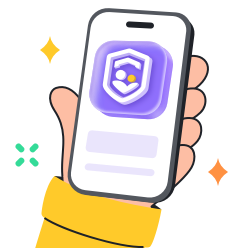Nowadays, due to online connectivity, kids get exposed to different types of content very early. There is vast content available online, and while scrolling, it is difficult to know what type of content gonna pop up on the screen. Therefore, it is better to educate your kids about the things they might encounter online or see in the real world. Here comes explicit content, and kids should know the pansexual definition. By knowing about pansexuality, kids not only learn something new but also stay safer by better understanding it.
This blog is going to talk about two major topics: explaining the pansexual definition in a way kids understand and teaching them how to stay safe online. Both are key to helping them grow into kind, aware, and smart individuals.
Overview of the pansexual definition
The meaning of pansexuality is very simple. But often it becomes tough to explain to kids. So here is a simple breakdown of the pansexual definition that kids can understand. In pensexual “pan” means all, and “sexual” means attraction could be romantic, emotional, or physical. A pansexual person doesn’t focus on whether someone is male, female, non-binary, or any other gender identity. Instead, they are attracted to the person for who they are.
You can explain it to your child like this: “Pansexual means that someone can love or feel close to anyone, regardless of their gender.
So, the important thing here is to understand that being pansexual does not mean liking everyone. It just means gender is not what matters most to them. A pansexual person can be attracted to someone regardless of their gender, and the thing that matters to them is the person’s love and emotion.
How does pansexuality differ from bisexuality?
You will understand pansexuality even better when you get to know about Bisexuality.
The simple meaning of bisexuality is being attracted to more than one gender. This typically includes both males and females. But also, some bisexual people are attracted to non-binary individuals, but not all.
Let’s understand this even better by differentiating between pansexuality and bisexuality:
– Gender consideration in attraction:
- Bisexual people often identify themselves with the gender of the person they are attracted to.
- Pansexual people typically don’t think about gender at all when they feel attraction.
– How people may describe themselves:
- A bisexual person might say, “I like both boys and girls.”
- A pansexual person might say, “I like people for who they are, not because they’re a boy or a girl.”
– Number of genders involved:
- Bisexuality includes attraction to two or more specific genders (for example, men and women, or men and non-binary people).
- Pansexuality is open to all genders but doesn’t focus on gender identity when feeling attracted.
Use simple language when explaining to kids
- “Some people like more than one gender—that’s bisexual.”
- “Some people don’t care about gender at all—they just care about the person—that’s pansexual.”
That’s why the pansexual definition often includes the idea of being “gender-blind” in terms of attraction.
Common misconceptions and clarifications
1. “Aren’t they basically the same?”
This is one of the biggest myths. While bisexual and pansexual people might be attracted to people of more than one gender, how they experience that attraction is different.
Pansexual people often say that gender plays no role in who they’re drawn to. It’s all about the person. Bisexual people might be attracted to different genders in different ways — and that’s okay too. These are different identities, and people deserve to have their identity respected as they define it.
2. “Bisexual people don‘’t believe in non-binary genders.”
That’s not true. Many bisexual people are fully aware of and attracted to non-binary individuals. The term “bisexual” has evolved over time. While the “bi” used to mean just two genders, many bisexual people now define it as “same and different genders,” which includes more than just male and female.
3. “Pansexual people are attracted to everyone.”
This is a misunderstanding. Pansexual doesn’t mean a person is attracted to every single human they meet. Just like anyone else, they have preferences and boundaries. It simply means that gender is not a deciding factor in their romantic or emotional attraction.
Examples of identity expression
Let’s say a bisexual person feels attracted to both men and women, and they are aware of gender when they feel that attraction. A pansexual person might feel attracted to a man, a woman, or someone who is non-binary, and gender isn’t a deciding factor.
For instance, a pansexual teen might say, “I like people for who they are, not whether they’re a boy or a girl.” That’s a simple way to express their identity.
Understanding these small differences helps children respect others and avoid making wrong assumptions.
Why these terms matter
Using the right terms helps people feel seen and respected. It also helps create a world where everyone feels safe expressing who they are. Understanding the difference between bisexual and pansexual helps stop stereotypes and promotes healthy, supportive conversations.
In the end, the most respectful thing we can do is listen to how people describe themselves and use the terms they prefer. If someone says they’re bisexual, believe them. If someone says they’re pansexual, support them.
The best way to teach kids this is through simple examples, kindness, and open-minded talks. Let them know that no matter what word someone uses, what matters most is respect and care for others.
Monitor conversations around pansexuality to promote a safe learning environment.
Why should parents discuss pansexuality with their kids?
You might be wondering, “Why talk about this now?” The answer is simple. Kids today are exposed to different people, ideas, and terms earlier than before. Talking to them at home ensures they get correct, respectful information.
Promoting inclusivity
When kids learn about identities like pansexuality, they begin to understand that everyone is different, and that’s okay. They learn that love and attraction are personal and that no one should be bullied or judged for who they are.
By understanding the pansexual definition, kids are less likely to tease or hurt others for being different. This promotes kindness and acceptance at school, online, and in daily life.
Setting a foundation for healthy conversations
When parents start open talks early, it becomes easier for children to ask questions without fear or shame. Talking about sexual orientation doesn’t mean encouraging kids to make decisions early. It means helping them understand and respect others.
This builds trust. Your child is more likely to come to you if they hear or see something confusing, either in real life or online. If they ever identify as pansexual or have a friend who does, your support can make a huge difference.
Preparing for real-world exposure
Whether in school, on the bus, or online, kids hear about gender and identity. If they don’t understand the terms, they might get confused or take in false information.
Teaching them the correct pansexual definition helps them process what they hear and talk about it respectfully. It also keeps them from being misled by harmful online content or jokes that can be offensive.
It’s not just about preparing them, it’s also about protecting them with knowledge.
Pansexuality in the context of online spaces: Parental control and safety
The internet is where most kids find their answers today. It’s fast, easy, and always available. But it’s also full of misinformation, hurtful comments, and content that isn’t age-appropriate.
So, how can you help your child learn safely online about topics like the pansexual definition?
Online discussions about pansexuality
If your child searches “pansexual definition” online, they may find helpful content—or they may land on pages filled with hate or confusion. That’s why it’s good to guide them toward safe websites like:
- Planned Parenthood.
- LGBTQ+ support organizations.
- Educational YouTube channels for kids and teens.
You can also talk to them directly. Say, “If you have questions about what you read or watch, I’m here for you. Let’s learn together.”
Avoid being judgmental. Make it a safe space for your child to talk and think freely.
Parental control tools
One way to protect your child online is by using parental control apps. These tools help you track what your child views and who they talk to, without invading their privacy.
A great example is FlashGet Kids. This tool allows parents to:



- Track keywords your child searches, such as “pansexual definition.”
- Monitor messages on social media.
- Set time limits for specific apps or websites.
- Get alerts if certain risky words appear in their chats.
Using FlashGet Kids to track and manage online conversations about sexual identity can help ensure your child encounters safe, accurate information and fosters respectful dialogue.
It gives you insight without needing to read every message or hover constantly.
It’s about helping, not spying.
Also, remind your kids that not everything online is true. Encourage them to check information with trusted adults or safe resources.
Conclusion
Raising kind, informed, and respectful children starts with the right conversations at home. Teaching your kids about the pansexual definition doesn’t mean forcing them to label themselves. It means helping them understand that people love in different ways and that’s okay. And online safety is also a big part of this. With so much content out there, it’s easy for kids to feel overwhelmed or misled. That’s why guiding them to trusted sources and using the tool FlashGet Kids can give them space to explore safely.

